After Abu Simbel, we cruised north through Lake Nasser, stopping at various points of interest along the way. Thousands of people, most of them Nubians, were displaced when Lake Nasser was created. The government offered them new housing. As is true along the Three Gorges in China, the younger people were quite content to move to more "modern" towns, while the older people strongly resisted being moved off their land.
 |
Lake Nasser is interesting, with the stark desert in the background, little strips of green along the shore, and occasional ruins that escaped the flooding.
|
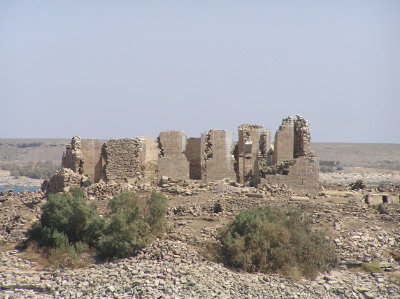 |
|
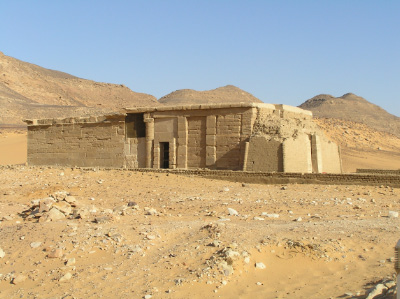 |
The first ruins that we saw were the remains of a medieval fort at Qasr Ibrim. The fort used to stand on a large headland; now the area has become an island. No landing is allowed.
|
|
Our first real exploration, then, was at Amada, which involved a fairly long walk through soft sand to reach what looked like at first a rather unimpressive mud-brick structure.
|
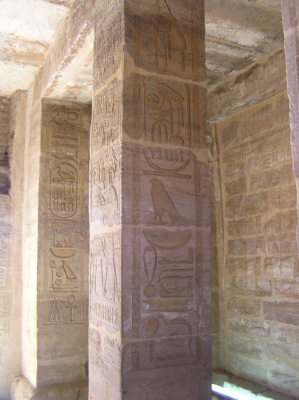 |
|
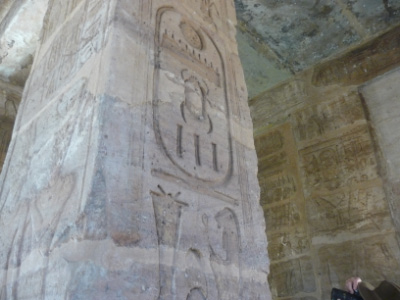 |
Inside the structure, though, were reliefs and paintings dating from the 1400s BC, all amazingly well-preserved. This is the oldest Nubian temple and had to be moved about 2 miles to avoid the waters of Lake Nasser.
|
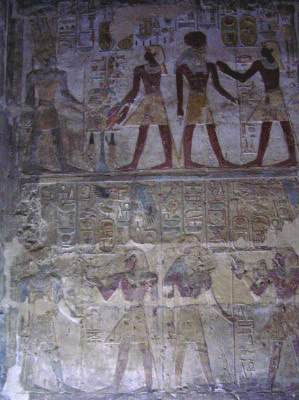 |
|
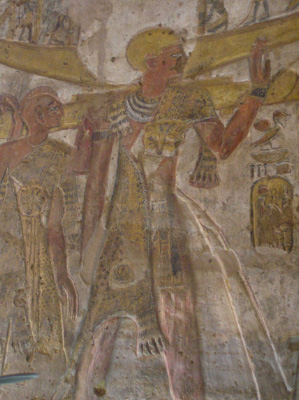 |
Near Amada is the Temple of Derr, built by Ramses II in the 1200s BC. Derr was also moved to avoid the flood. The paintings of the pharaoh making offering are particularly well-preserved.
|
|
The Egyptian painters of the New Kingdom were masters of detail and much of this has survived the centuries, like this priest wearing a leopard skin and carrying a ceremonial barge--you can see the whiskers and spots on the leopard skin.
|
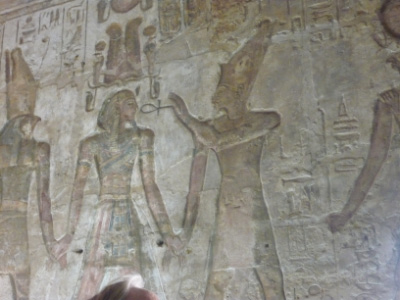 |
|
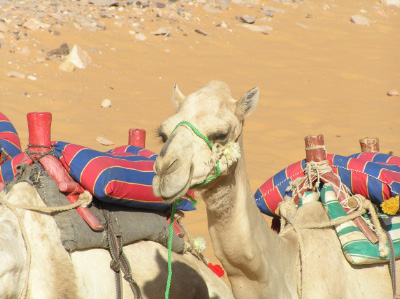 |
A traditional scene of the pharaoh receiving the breath of life (ankh) from the gods.
|
|
As we exited the temple, there were "friendly" camels--and their even more helpful owners--waiting to transport us back if we didn't feel like walking.
|
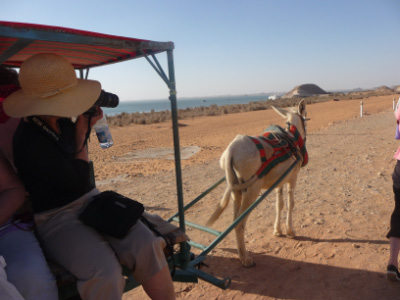 |
|
|
But a number of us opted for a traditional donkey cart--arranged by our ever-watchful guide, Ehab, who waxed nostalgic about his boyhood donkey cart outings with his family.
|
|
|
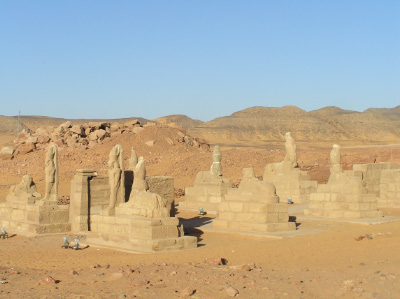 |
|
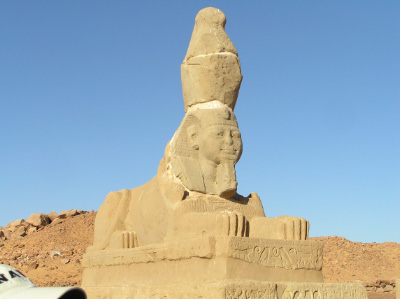 |
The next day we stopped at Wadi as-Seboua--another temple of Ramses II. This temple is distinguished in part by the elaborate Avenue of the Sphinxes by which is it approached.
|
|
The sphinxes here are much smaller than the one at Giza, but look more regal wearing the traditional pharonic crown.
|
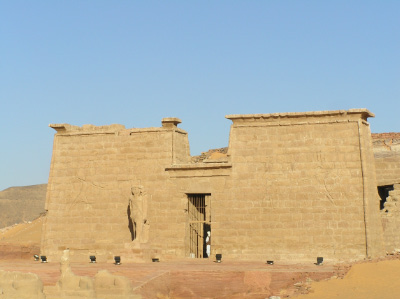 |
|
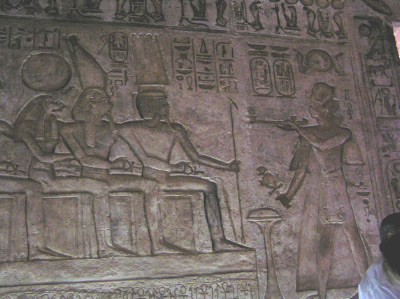 |
The temple itself is entered via a monumental gateway adorned with two colossal statues of (naturally) Ramses II (one of which is still standing).
|
|
Inside are reliefs of Ramses II making offerings to the gods: Horus the falcon-headed god on the left, Amon-Ra on the right, and Ramses himself in the middle--so he is making offerings to himself.
|
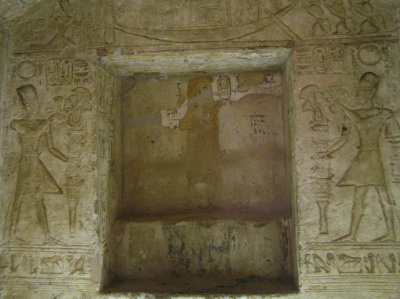 |
|
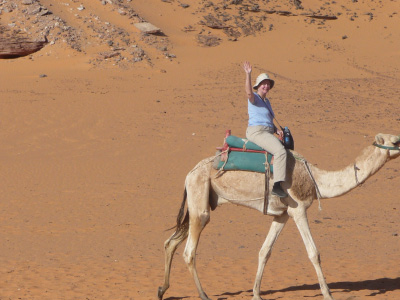 |
Like many ancient temples, this one was later converted for use as a Christian Church. This niche was cut into the back wall and contained a fresco of St. Peter, so the overall effect is the pagan Egyptians making offerings to Peter.
|
|
It was a bit of a hike to the next temple so Pat decided to go by camel. She had resisted camel rides that just went around in circles (like at Giza) but reasoned that using them for actual transport was OK. The gait was a little unusual, but actually pretty comfortable once she got used to it.
|
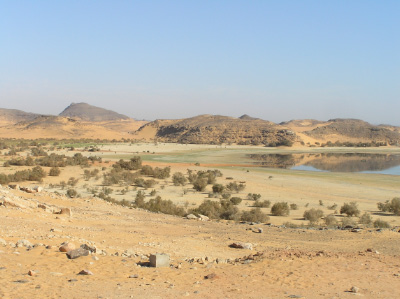 |
|
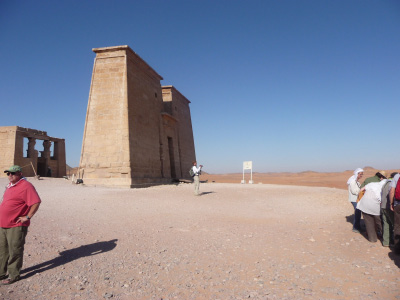 |
The view from camel-back was very nice, with the dark hills and blue water contrasting with the sand and shrubs.
|
|
The second temple in the area is the Temple of Dakka, which is primarily a Ptolemaic (200-100s BC) structure. Relatively little remains of it beyond the monumental gateway and some walls. it is a good example of how the Greeks and the Romans used traditional Egyptian architecture to please the local people--the two temples on this site look quite similar even though they were built many years apart and were originally many miles apart as well.
|
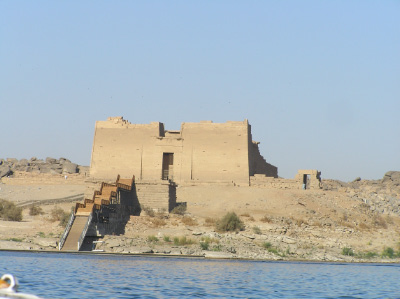 |
|
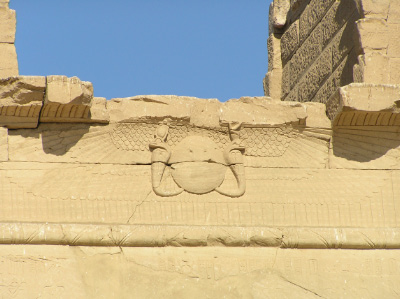 |
The next day it was on to Kalabsha, a temple built by Augustus (early first century AD), but again looking very similar to the Ramses temple at Wadi as-Seboua.
|
|
The winged sun disk was a frequent motif in both the Egyptian temples and their Greco-Roman successors.
|
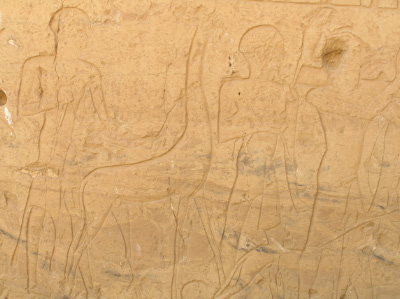 |
|
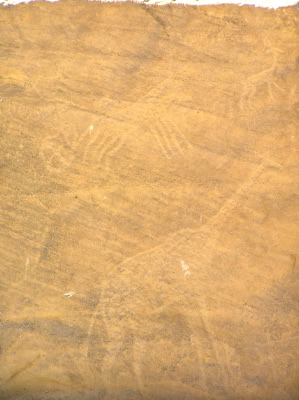 |
Giraffes! We didn't expect to see any in this part of Africa, but here they were. One was a part of a parade of tribute being given to the Emperor/Pharaoh in the temple. The other is a prehistoric drawing, one of several showing various types of fauna that were hunted by the local, pre-Egyptian population.
|
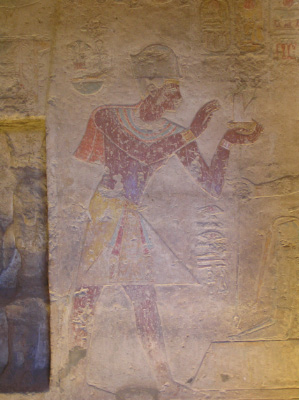 |
|
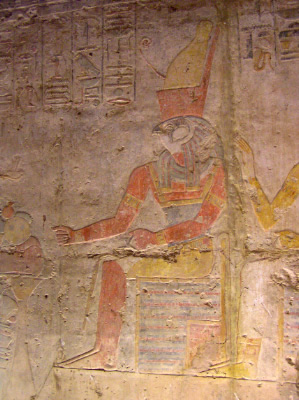 |
Kalabsha also has its share of vividly-colored paintings, including this one of a man making an offering to the god.
|
|
One of the most popular gods in temple art is Horus, the falcon-headed god, often shown wearing the crown of the pharaoh. Horus represents the deified pharaoh as well as being the protector of the living pharaoh.
|
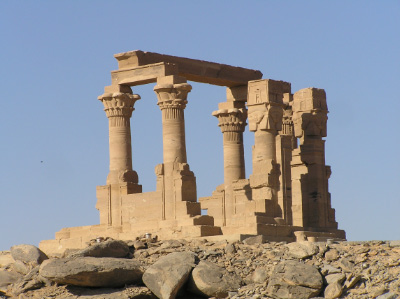 |
|
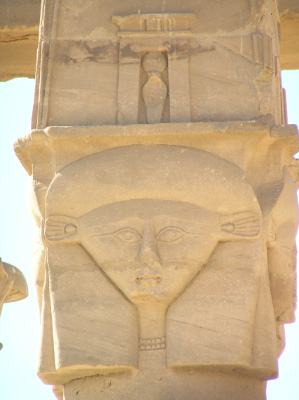 |
Next to Kalabsha is the Kiosk of Qertassi, another Roman structure.
|
|
The Kiosk is not well-preserved but does still have two columns depicting Hathor, the cow-headed goddess of beauty. |






































